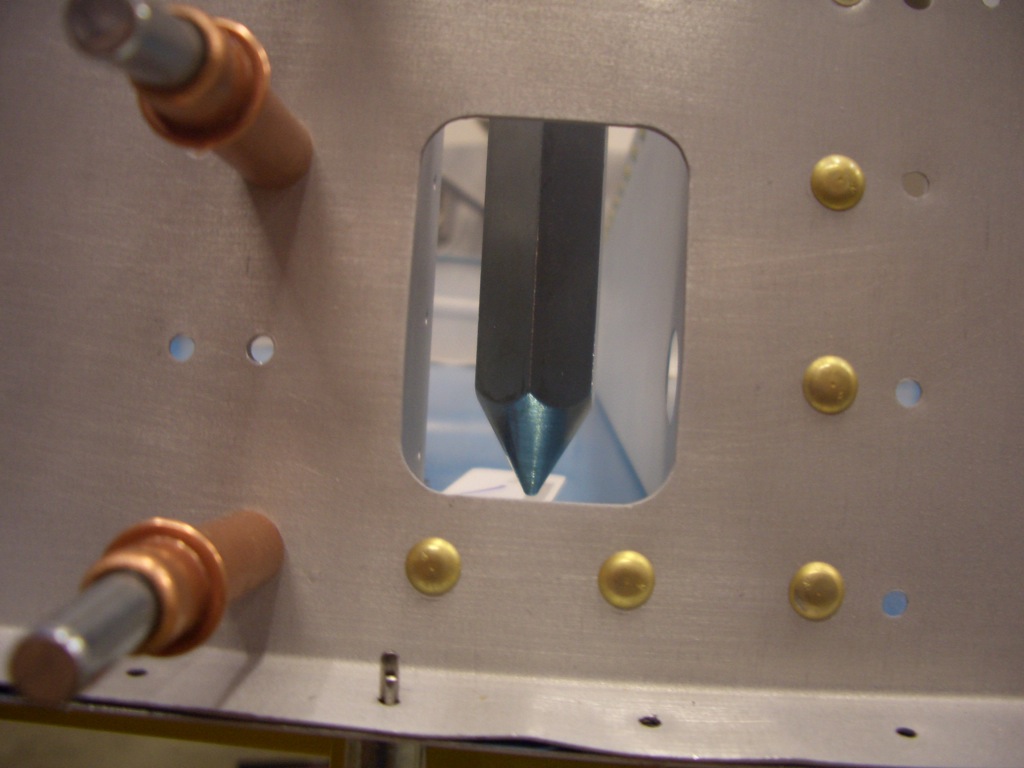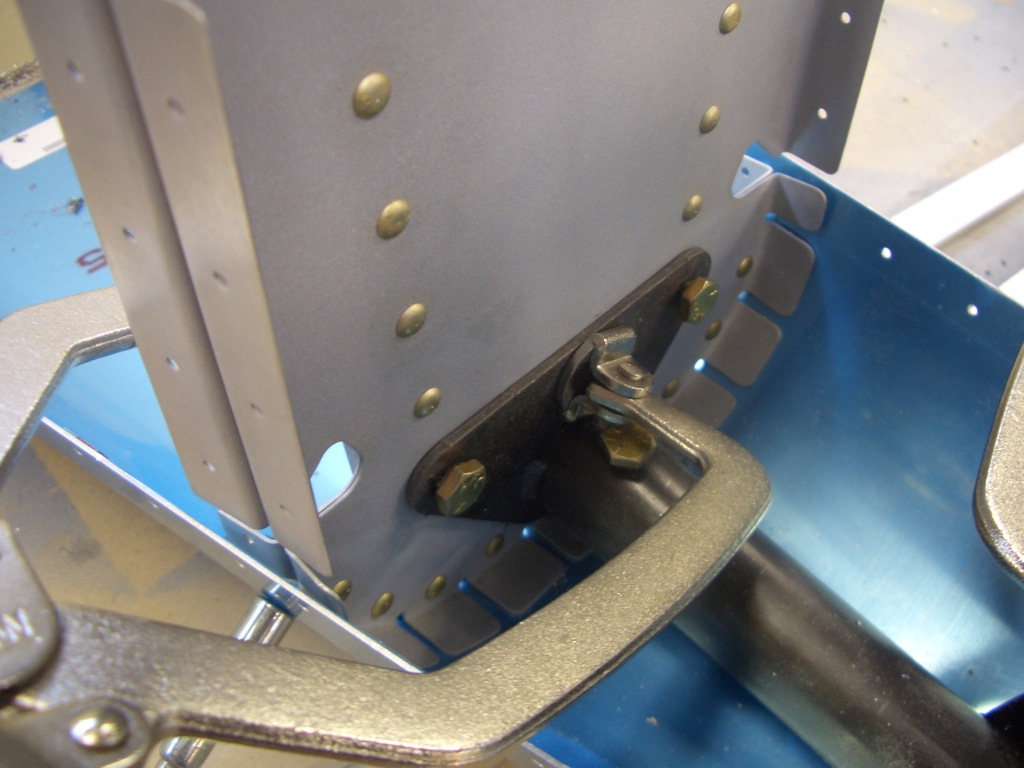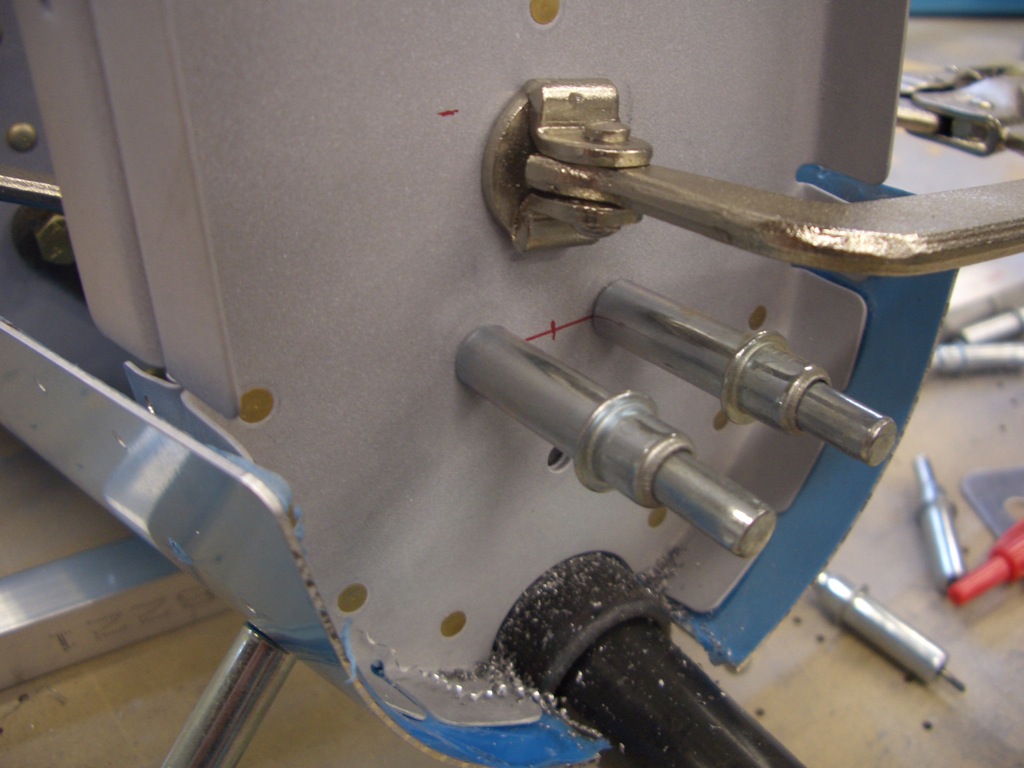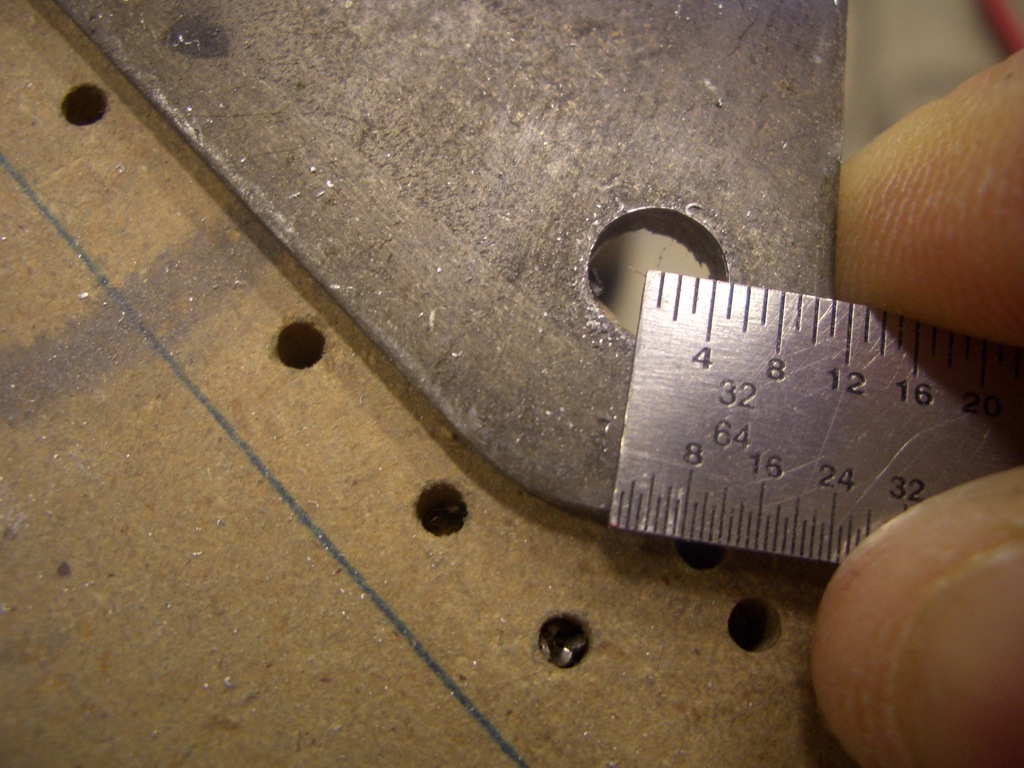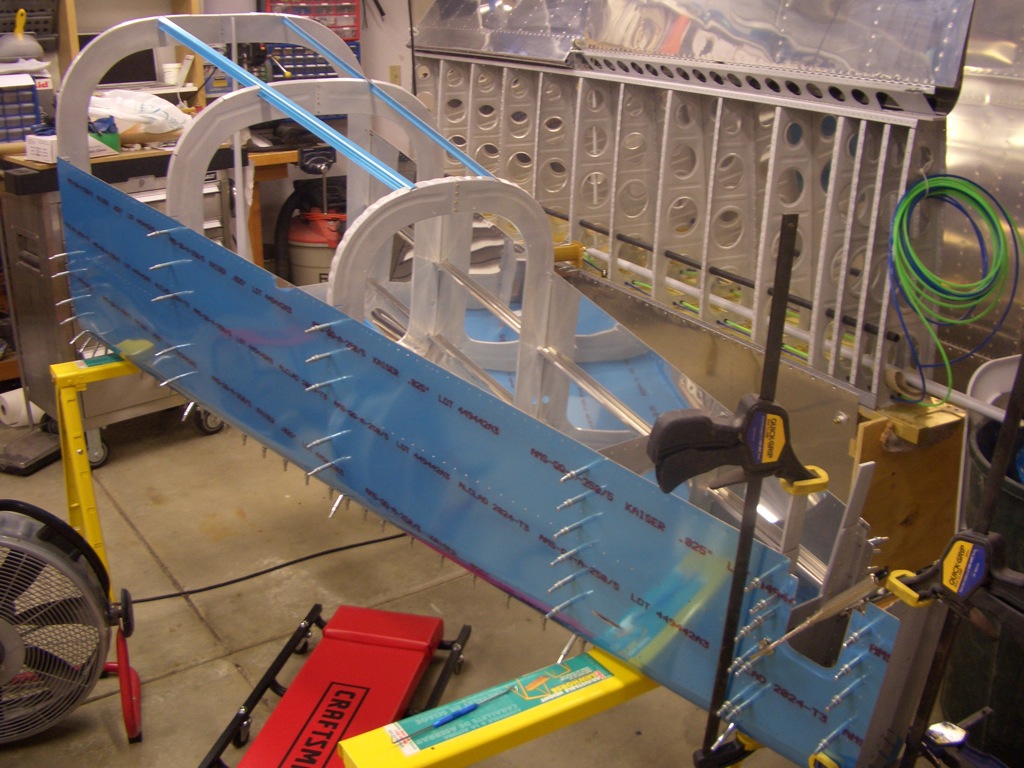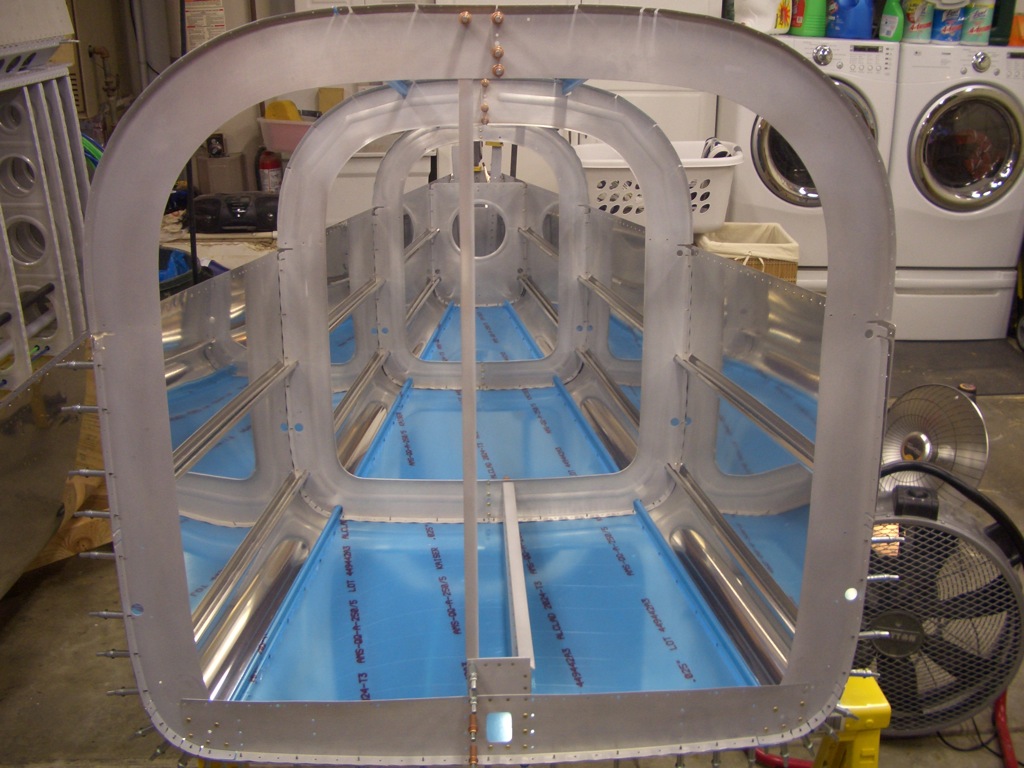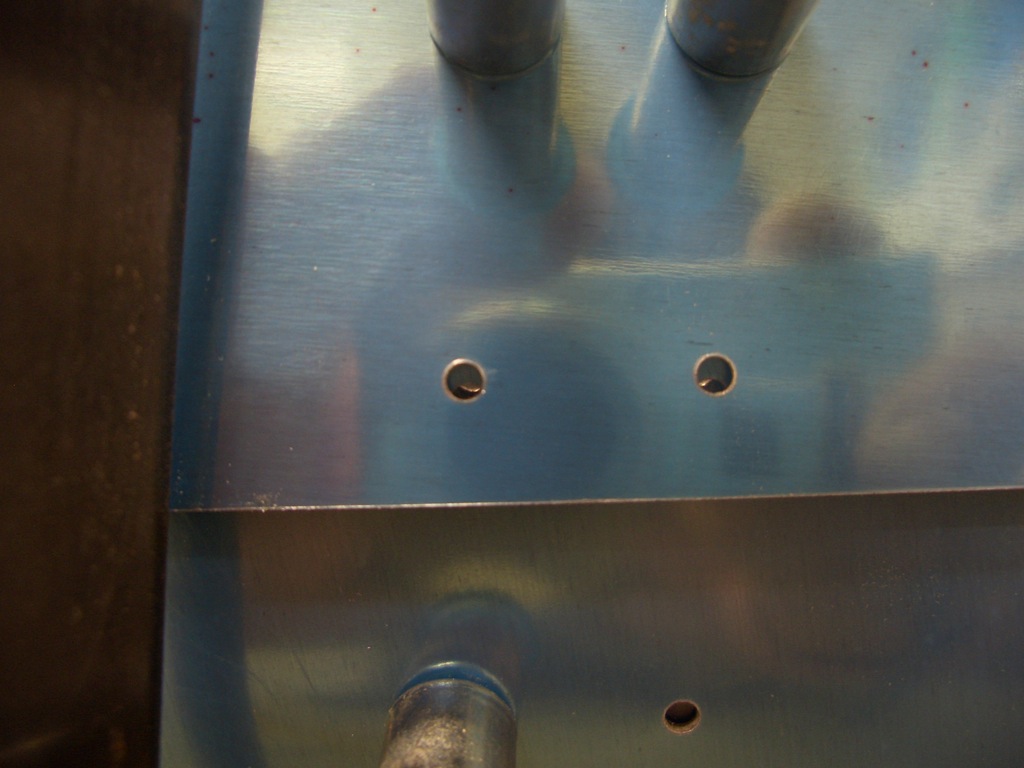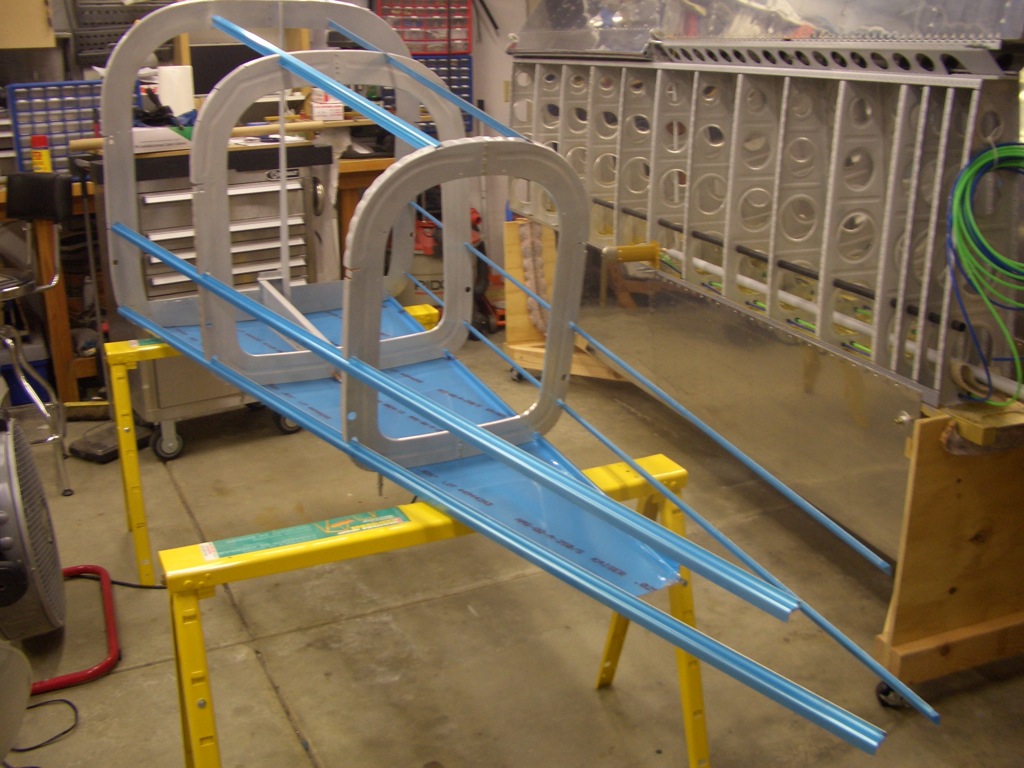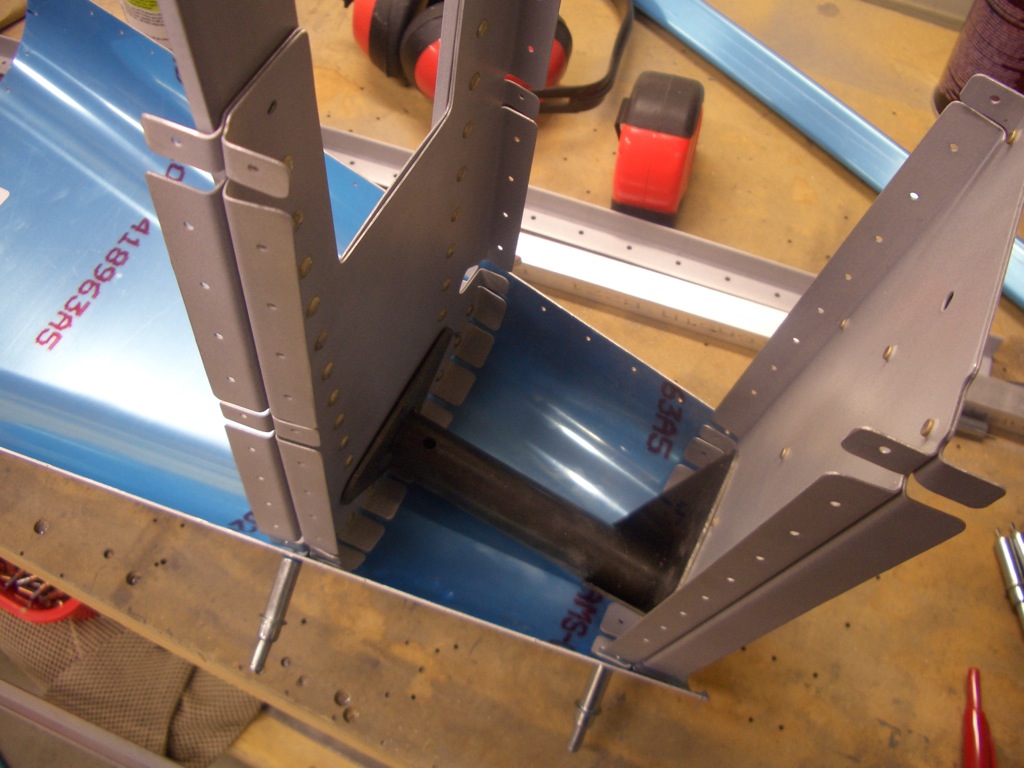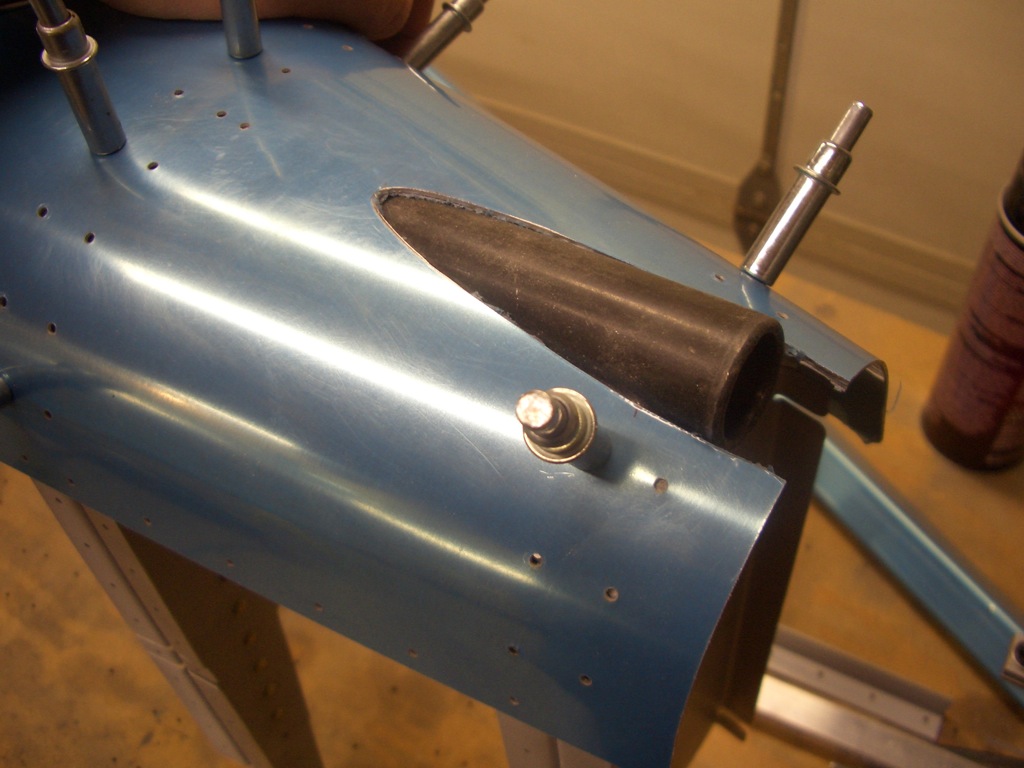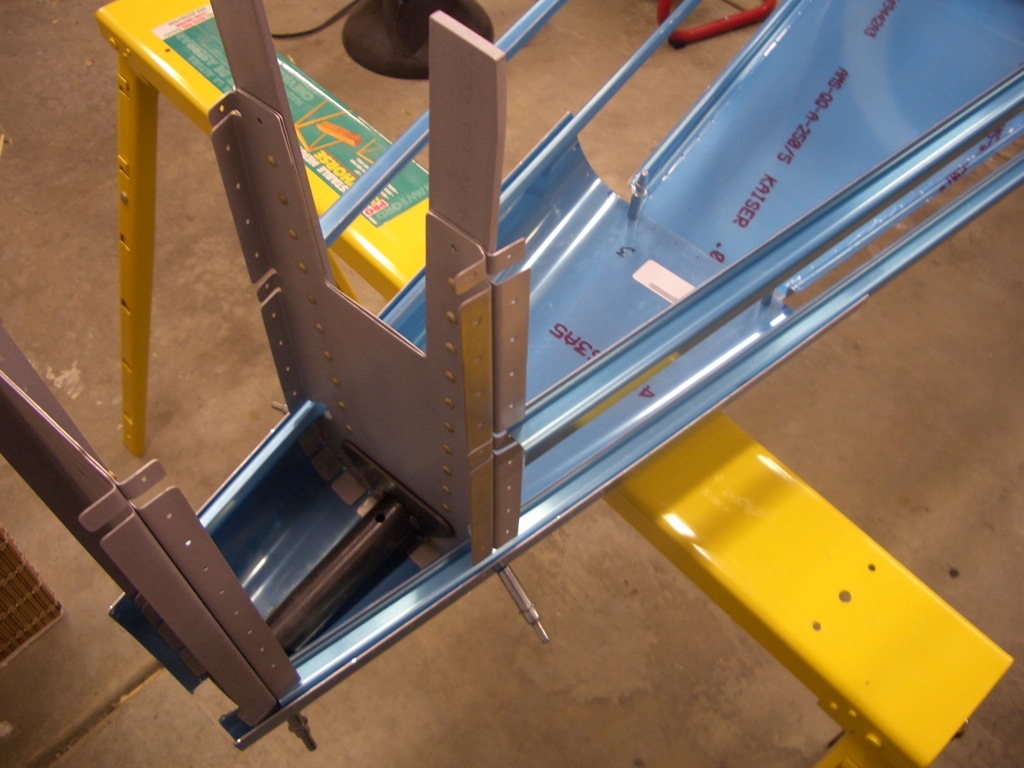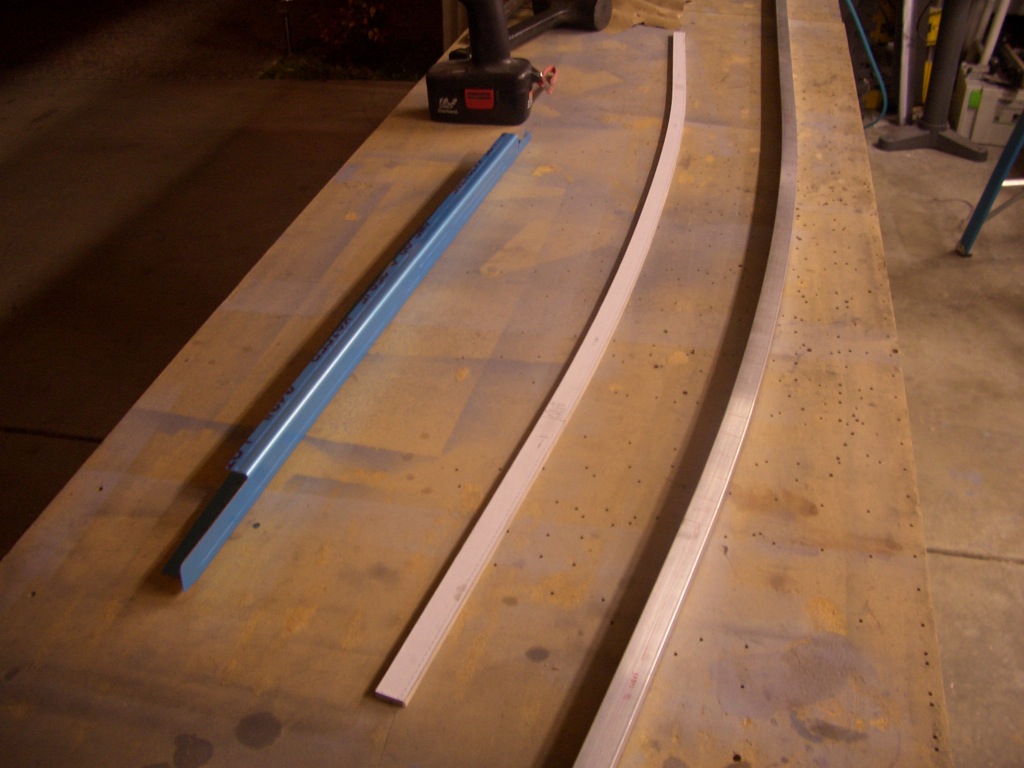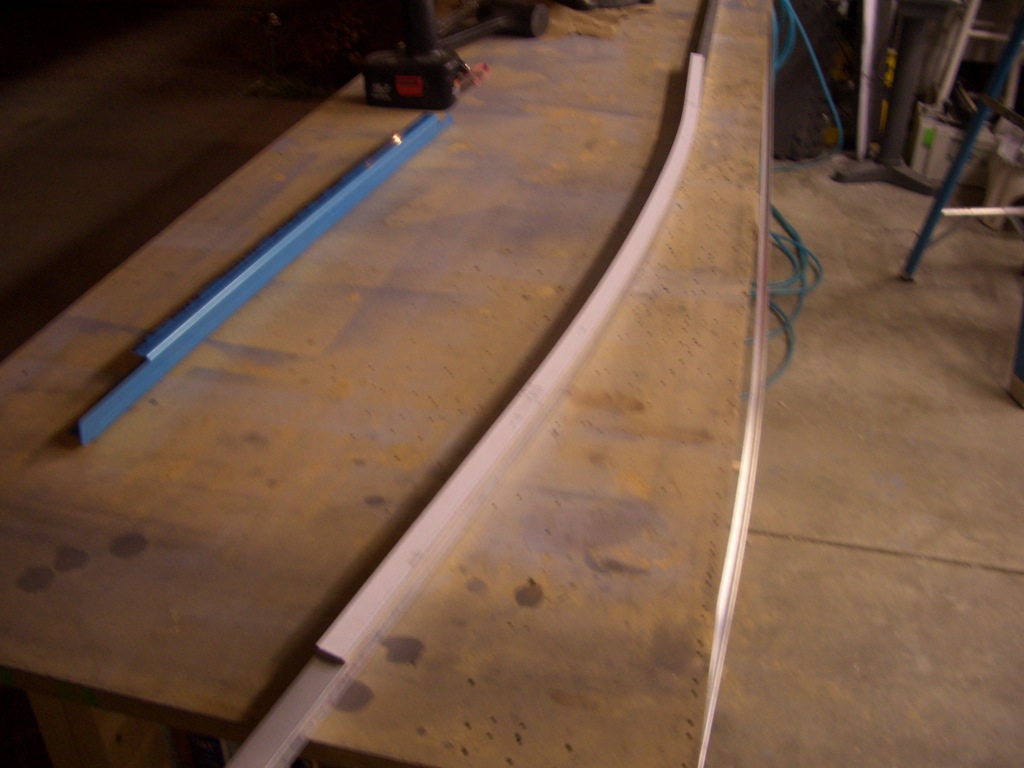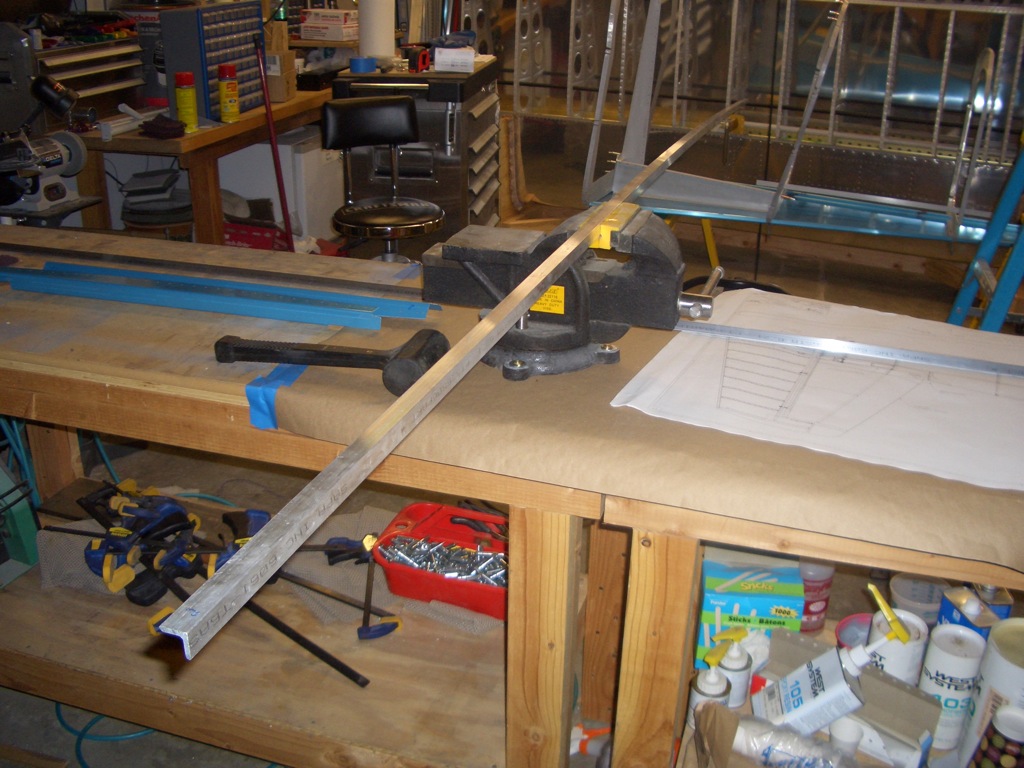Like I mentioned yesterday, the holes in the tail skin didn’t come close to aligning to the side skins. I couldn’t pry the skins into alignment and hold them with clecos because there is a stringer right behind the row of rivets along the bottom of the side skin and the stringers don’t have any holes in them. The fix turned out to be relatively simple. Remove the side skin, match drill the lower stringers through the holes that will be shared with the tail skin, then cleco the tail skin back on.
Getting the tail skin out without removing all of the bulkheads required removing a fair number of clecos at this end of the fuselage. Here, I’ve match drilled the lower stringers from F-710 back.
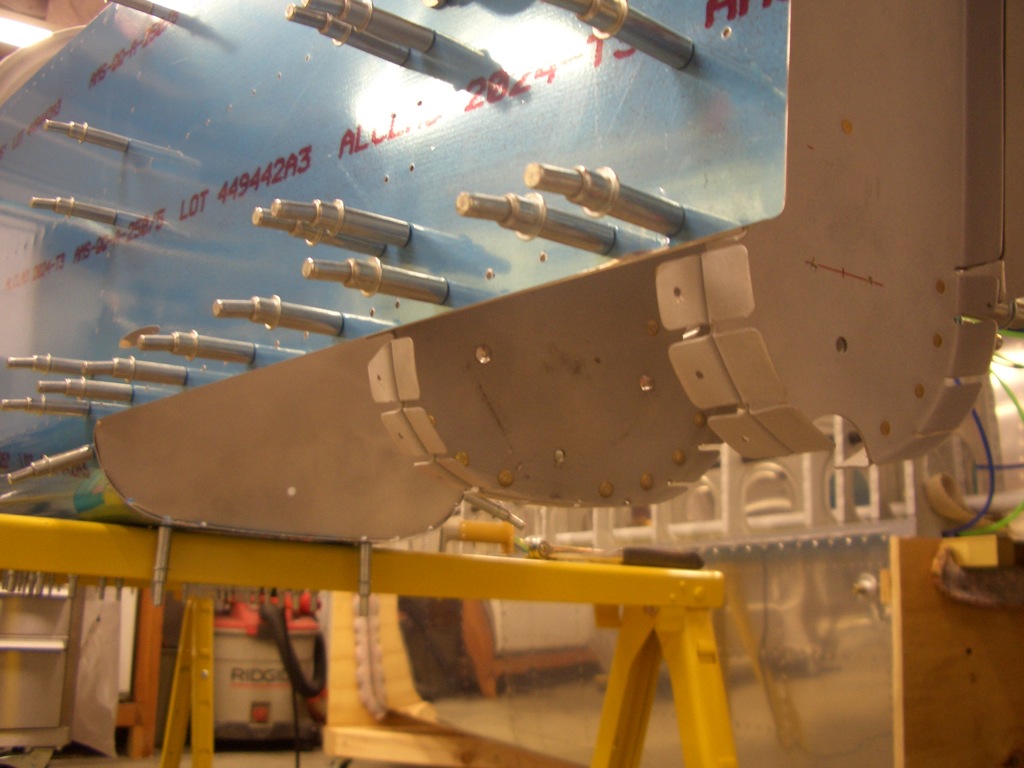
Now the F-779 tail skin can be fit. Putting in the clecos on the first side was pretty easy, but the second side was pretty tricky. The fit is really tight in this area, so it takes a fair amount of force to get the holes to align. I worked my way from the front to the back one hole at a time and eventually got everything aligned nicely.
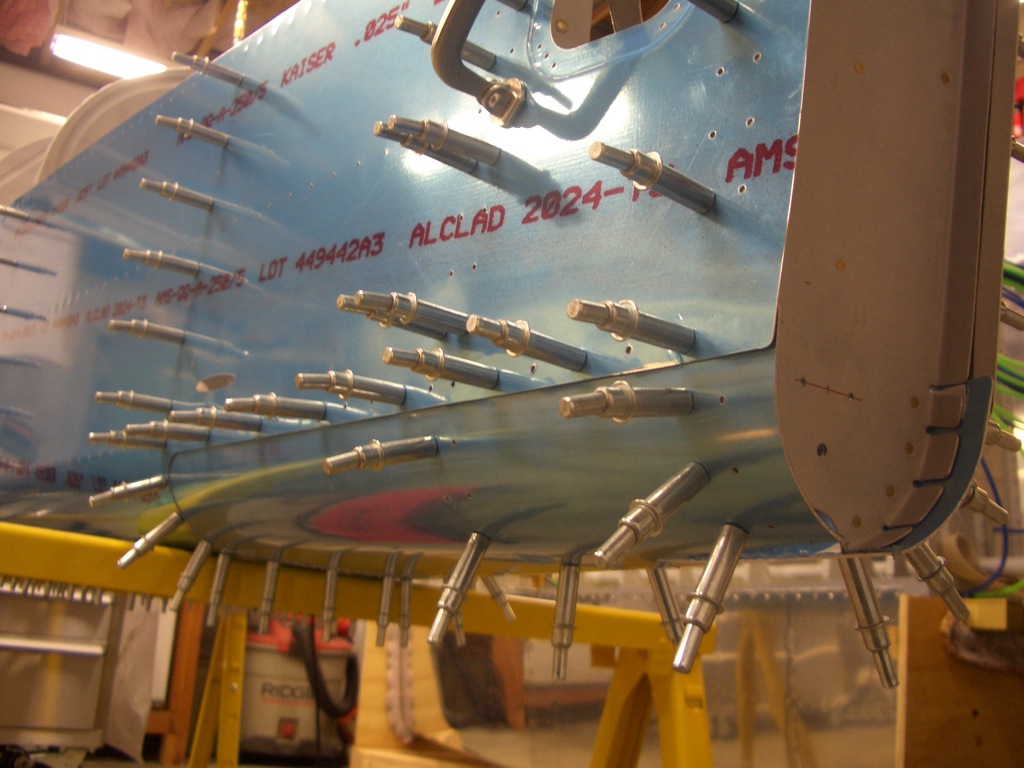
It’s hard to see here, but I hung a plumb bob through the top tooling hole of F-712 and shimmed the tail until the string bisected the bottom tooling hole.
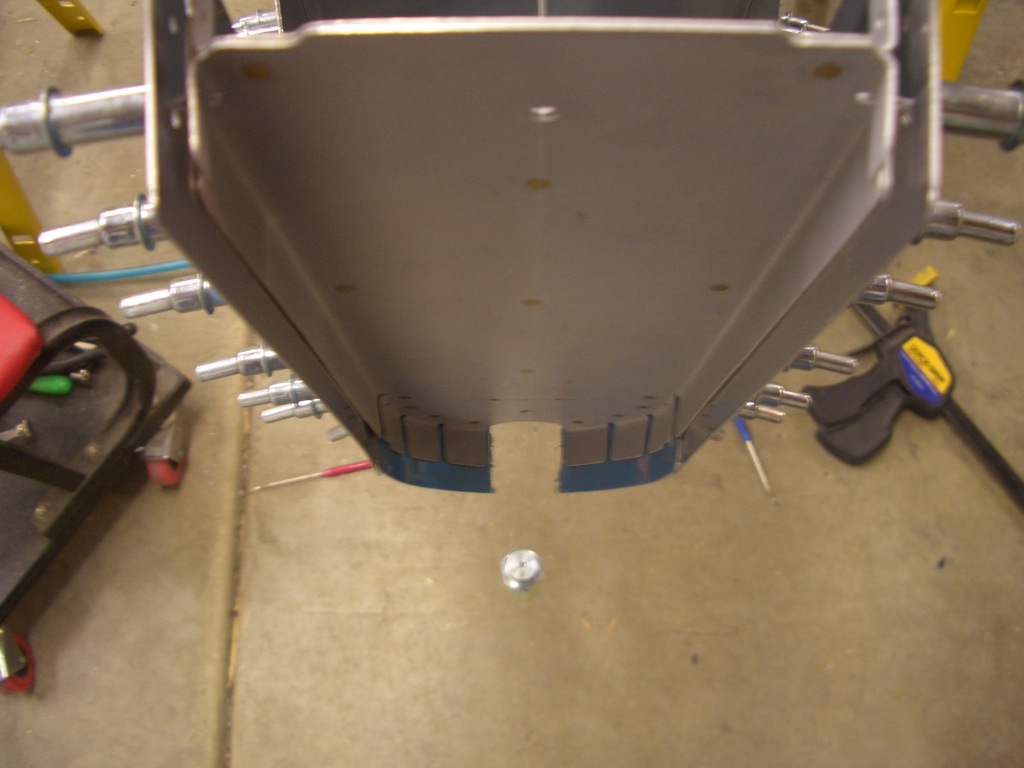
I then hung a second plumb bob from the upper tooling hole in F-706 and shimmed the front until this was centered in the opening. It’s too late to start drilling tonight, so I’ll start this tomorrow.
